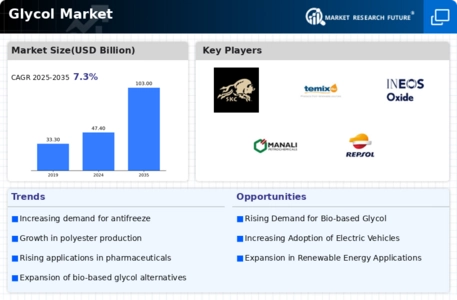Market Trends
Key Emerging Trends in the Glycol Market
The dynamic landscape of the glycol market has seen several trends in recent times due to a number of factors. A prominent one notable among these is the increasing demand for glycols in the automotive industry which is a consequence of growing electric vehicles production. In line with sustainability goals, EVs require ethylene glycol and propylene glycol for their cooling systems and heat exchangers. This increase in consumption can be attributed not only to the increase in production of electric vehicles but also to the larger trend towards environmental consciousness where energy efficiency is enhanced through use of glycols.
Another major trend that shapes the global market for Glycol is on renewable and bio-based Glycols. Many industries are looking for alternatives to conventional petroleum based Glycols as they focus more on sustainable practices and reducing carbon footprints. These eco- friendly substances produced from renewable sources like corn or sugarcane, have gained popularity among many people. On top of that, there are world-wide moves towards greener futures hence companies worldwide moving into biorenewable alternatives as part of their manufacturing processes.
Moreover, the Glycol Market is experiencing developments in product formulations that meet industry-specific needs. The practice of customizing Glycol solutions to different purposes across various sectors has become popular. For instance, high purity standards compliant-glycols are increasingly being sought by customers within pharmaceutical and food industries. This indicates how adaptable this market can be where manufacturers concentrate on creating niche specific glycol products so as widen their consumer base further.
The digital transformation is also making its mark on the glycol market, with advanced technologies integrated to enhance efficient supply chain management and product distribution. Companies have embraced data analytics and automation to optimize production processes, monitor inventory levels and streamline logistics. This trend toward digitalization improves operational efficiency while lowering costs thus enabling a more responsive supply chain to meet dynamic needs of the glycol market.








Leave a Comment